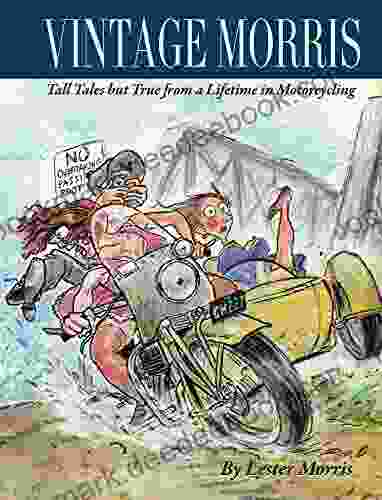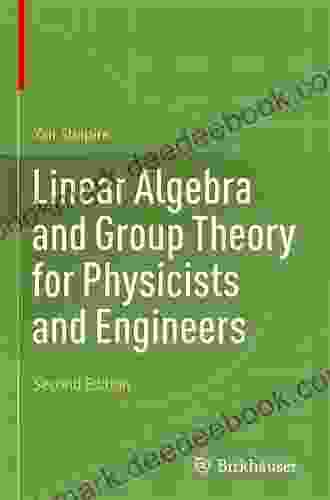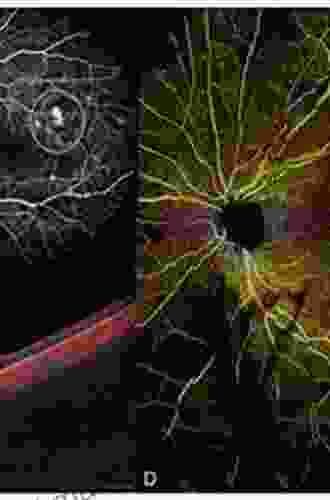Linear Algebra and Group Theory for Physicists and Engineers: An Essential Guide to Mathematical Foundations

Linear algebra and group theory are two fundamental branches of mathematics that play a pivotal role in physics and engineering. Physicists and engineers employ these mathematical tools to describe and analyze complex systems, solve problems, and derive meaningful insights from data. This article aims to provide a comprehensive overview of linear algebra and group theory, elucidating their significance in various scientific disciplines.
Linear Algebra
Linear algebra is the study of vector spaces, which are sets of mathematical objects called vectors. Vectors can represent physical quantities such as force, velocity, and position, providing a convenient framework for describing and solving problems in physics. Linear algebra offers a powerful toolkit for manipulating vectors, matrices, and linear equations, making it indispensable in areas such as quantum mechanics, electromagnetism, and computational mechanics.
4.5 out of 5
| Language | : | English |
| File size | : | 9060 KB |
| Screen Reader | : | Supported |
| Print length | : | 472 pages |
| Paperback | : | 30 pages |
| Reading age | : | 3 - 8 years |
| Item Weight | : | 4.3 ounces |
| Dimensions | : | 8.5 x 0.08 x 11 inches |
Vector Spaces and Subspaces
A vector space is a set of vectors that can be added and multiplied by scalars (numbers) according to specific rules. Subspaces are subsets of vector spaces that inherit the same vector addition and scalar multiplication operations. Linear algebra allows us to analyze the properties of vector spaces and subspaces, including their dimensions, bases, and orthogonality relations.
Matrices and Linear Transformations
Matrices are rectangular arrays of numbers that represent linear transformations, which are functions that map vectors from one vector space to another. Linear transformations are widely used in physics to represent rotations, reflections, and other geometric operations. The study of matrices and linear transformations is central to understanding concepts such as eigenvalues, eigenvectors, and diagonalization, which are essential for solving systems of linear equations and analyzing linear dynamical systems.
Applications in Physics and Engineering
Linear algebra finds numerous applications in physics and engineering. In quantum mechanics, it is used to describe the wave function of a particle, which is a vector in a complex vector space. In electromagnetism, it is employed to analyze electric and magnetic fields, represented as vector fields in three-dimensional space. Moreover, linear algebra is fundamental in computational mechanics for solving large-scale systems of linear equations arising from finite element analysis and computational fluid dynamics.
Group Theory
Group theory deals with the study of algebraic structures called groups. Groups consist of a set of elements together with an operation that combines any two elements to produce a third element within the same set. Groups are ubiquitous in mathematics, physics, and engineering, providing a framework for understanding symmetries, transformations, and other fundamental properties of systems.
Group Properties and Homomorphisms
Groups are characterized by their properties, including associativity, identity element, inverse elements, and group multiplication. Group theory investigates the relationships between different groups, including isomorphisms and homomorphisms, which are mappings that preserve the group operation.
Symmetry Groups and Invariance
Symmetry plays a crucial role in both physics and engineering. Group theory provides a rigorous mathematical framework for describing and classifying symmetries. Symmetry groups are groups whose elements represent transformations that leave a system unchanged. Invariance under symmetry transformations is a powerful concept that underpins fundamental laws of physics and engineering design.
Representations of Groups
Representations of groups are homomorphisms from a group to a group of matrices. They provide a way to visualize and manipulate groups by representing their elements as matrices and their operation as matrix multiplication. Representations are widely used in quantum mechanics, particle physics, and other areas of physics to study symmetries and solve complex problems.
Applications in Physics and Engineering
Group theory has a wide range of applications in physics and engineering. In particle physics, it is used to classify elementary particles and study their interactions. In engineering, group theory is employed in crystallography to understand the symmetries of crystal structures and in robotics to analyze the kinematics and dynamics of robots.
Interplay between Linear Algebra and Group Theory
Linear algebra and group theory are closely intertwined and often used in conjunction to solve complex problems. Linear representations of groups provide a powerful tool for understanding the symmetries of physical systems. Conversely, group theory can be used to analyze the properties of vector spaces and linear transformations. This interplay is evident in areas such as quantum mechanics, where group theory is used to describe the symmetry properties of the Schrödinger equation and linear algebra is employed to solve the resulting eigenvalue problems.
Linear algebra and group theory are essential mathematical frameworks that underpin a vast array of scientific disciplines, including physics and engineering. These powerful tools enable researchers and practitioners to describe, analyze, and solve complex problems related to symmetry, transformations, and the behavior of physical and engineered systems. By understanding the concepts and applications of linear algebra and group theory, physicists and engineers can gain a deeper understanding of the world around them and make significant contributions to scientific and technological advancements.
4.5 out of 5
| Language | : | English |
| File size | : | 9060 KB |
| Screen Reader | : | Supported |
| Print length | : | 472 pages |
| Paperback | : | 30 pages |
| Reading age | : | 3 - 8 years |
| Item Weight | : | 4.3 ounces |
| Dimensions | : | 8.5 x 0.08 x 11 inches |
Do you want to contribute by writing guest posts on this blog?
Please contact us and send us a resume of previous articles that you have written.
 Book
Book Page
Page Story
Story Paperback
Paperback Sentence
Sentence Bookmark
Bookmark Glossary
Glossary Bibliography
Bibliography Preface
Preface Synopsis
Synopsis Manuscript
Manuscript Scroll
Scroll Codex
Codex Bestseller
Bestseller Classics
Classics Biography
Biography Encyclopedia
Encyclopedia Thesaurus
Thesaurus Narrator
Narrator Character
Character Resolution
Resolution Librarian
Librarian Catalog
Catalog Card Catalog
Card Catalog Stacks
Stacks Archives
Archives Study
Study Research
Research Reserve
Reserve Academic
Academic Reading Room
Reading Room Rare Books
Rare Books Special Collections
Special Collections Interlibrary
Interlibrary Literacy
Literacy Study Group
Study Group Thesis
Thesis Storytelling
Storytelling Reading List
Reading List Textbooks
Textbooks Jane Christmas
Jane Christmas Emma King
Emma King Jonathan Beam
Jonathan Beam Maggie Bonanomi
Maggie Bonanomi Brandi Glanville
Brandi Glanville Claude Carlier
Claude Carlier Sam Savage
Sam Savage De Wet Potgieter
De Wet Potgieter Nate Golon
Nate Golon Bertolt Brecht
Bertolt Brecht Anthony A Barrett
Anthony A Barrett Ray Smith
Ray Smith Paul Oswell
Paul Oswell Jen Green
Jen Green Norman Bentwich
Norman Bentwich Hinnah Mian
Hinnah Mian Reanne Hemingway Douglass
Reanne Hemingway Douglass Carol Novello
Carol Novello Saad Islam
Saad Islam Fred Weber
Fred Weber
Light bulbAdvertise smarter! Our strategic ad space ensures maximum exposure. Reserve your spot today!

 Rodney ParkerThe Iron Road: A Comprehensive History of the British Railway Track Since...
Rodney ParkerThe Iron Road: A Comprehensive History of the British Railway Track Since...
 Houston PowellThis Train Terminates Here: A Journey of Loss, Renewal, and the Power of...
Houston PowellThis Train Terminates Here: A Journey of Loss, Renewal, and the Power of... Colin RichardsonFollow ·10.5k
Colin RichardsonFollow ·10.5k Eugene ScottFollow ·15.9k
Eugene ScottFollow ·15.9k David MitchellFollow ·13.8k
David MitchellFollow ·13.8k Ted SimmonsFollow ·5k
Ted SimmonsFollow ·5k Ed CooperFollow ·5k
Ed CooperFollow ·5k Desmond FosterFollow ·8.8k
Desmond FosterFollow ·8.8k Gregory WoodsFollow ·11.8k
Gregory WoodsFollow ·11.8k Fredrick CoxFollow ·16.8k
Fredrick CoxFollow ·16.8k

 Oscar Wilde
Oscar WildeDon't Stop Thinking About the Music: Exploring the Power...
Music is an...

 Floyd Richardson
Floyd RichardsonSnowman Story Problems Math With Santa And Friends
It's a cold winter day, and...

 W. Somerset Maugham
W. Somerset MaughamWhat Every Classroom Teacher Needs To Know: A...
Teaching is a challenging...

 Edgar Cox
Edgar CoxTall Tales But True: A Lifetime of Motorcycling...
I've been riding motorcycles for over 50...

 Chinua Achebe
Chinua AchebeBuni: Happiness Is a State of Mind
Buni is a beautiful...

 Herman Melville
Herman MelvilleThe Arts and Crafts of Older Spain: Embodying the Essence...
In the heart of the Iberian...
4.5 out of 5
| Language | : | English |
| File size | : | 9060 KB |
| Screen Reader | : | Supported |
| Print length | : | 472 pages |
| Paperback | : | 30 pages |
| Reading age | : | 3 - 8 years |
| Item Weight | : | 4.3 ounces |
| Dimensions | : | 8.5 x 0.08 x 11 inches |








